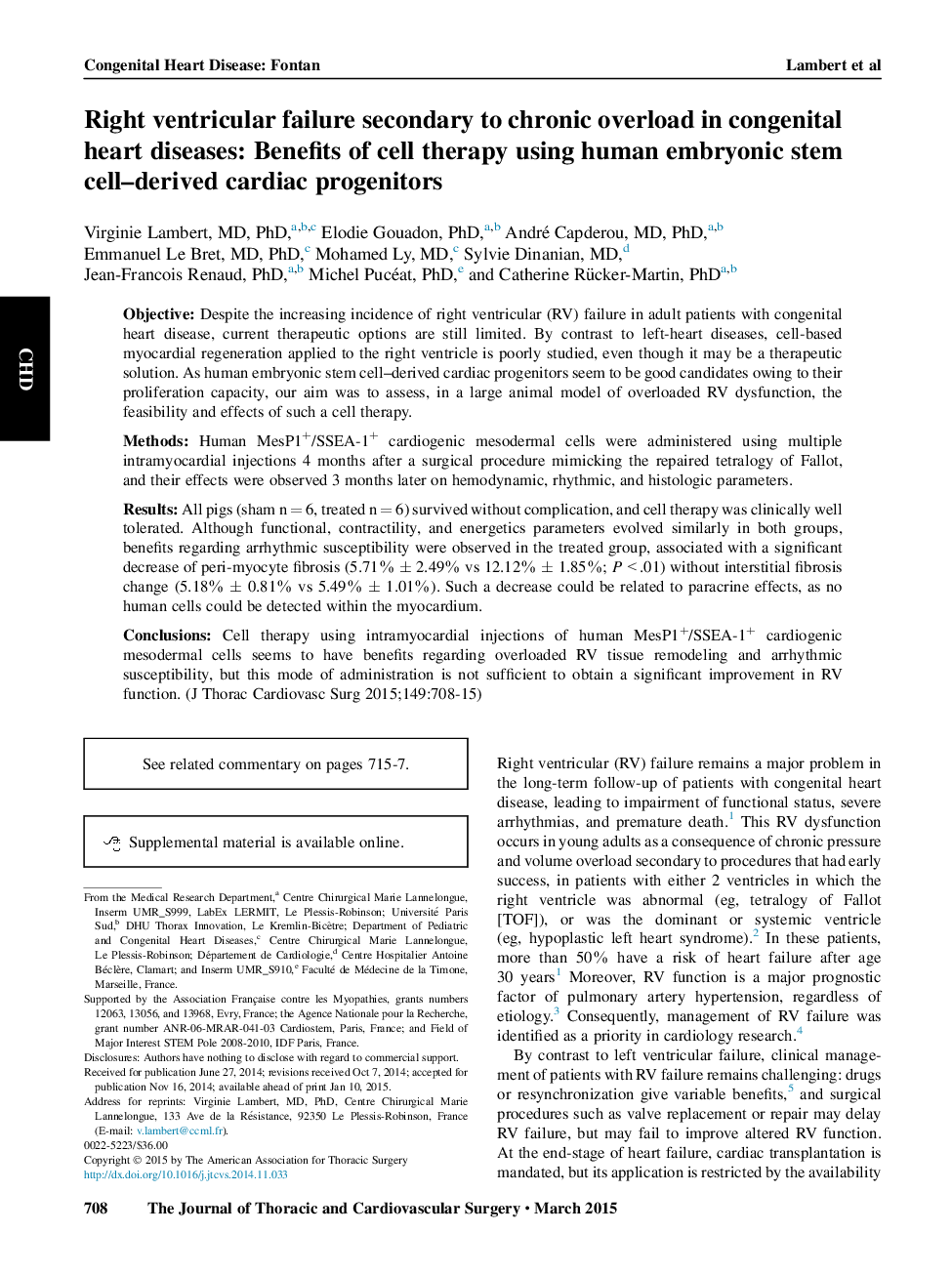| Article ID | Journal | Published Year | Pages | File Type |
|---|---|---|---|---|
| 5988862 | The Journal of Thoracic and Cardiovascular Surgery | 2015 | 9 Pages |
ObjectiveDespite the increasing incidence of right ventricular (RV) failure in adult patients with congenital heart disease, current therapeutic options are still limited. By contrast to left-heart diseases, cell-based myocardial regeneration applied to the right ventricle is poorly studied, even though it may be a therapeutic solution. As human embryonic stem cell-derived cardiac progenitors seem to be good candidates owing to their proliferation capacity, our aim was to assess, in a large animal model of overloaded RV dysfunction, the feasibility and effects of such a cell therapy.MethodsHuman MesP1+/SSEA-1+ cardiogenic mesodermal cells were administered using multiple intramyocardial injections 4 months after a surgical procedure mimicking the repaired tetralogy of Fallot, and their effects were observed 3 months later on hemodynamic, rhythmic, and histologic parameters.ResultsAll pigs (sham n = 6, treated n = 6) survived without complication, and cell therapy was clinically well tolerated. Although functional, contractility, and energetics parameters evolved similarly in both groups, benefits regarding arrhythmic susceptibility were observed in the treated group, associated with a significant decrease of peri-myocyte fibrosis (5.71% ± 2.49% vs 12.12% ± 1.85%; P < .01) without interstitial fibrosis change (5.18% ± 0.81% vs 5.49% ± 1.01%). Such a decrease could be related to paracrine effects, as no human cells could be detected within the myocardium.ConclusionsCell therapy using intramyocardial injections of human MesP1+/SSEA-1+ cardiogenic mesodermal cells seems to have benefits regarding overloaded RV tissue remodeling and arrhythmic susceptibility, but this mode of administration is not sufficient to obtain a significant improvement in RV function.
